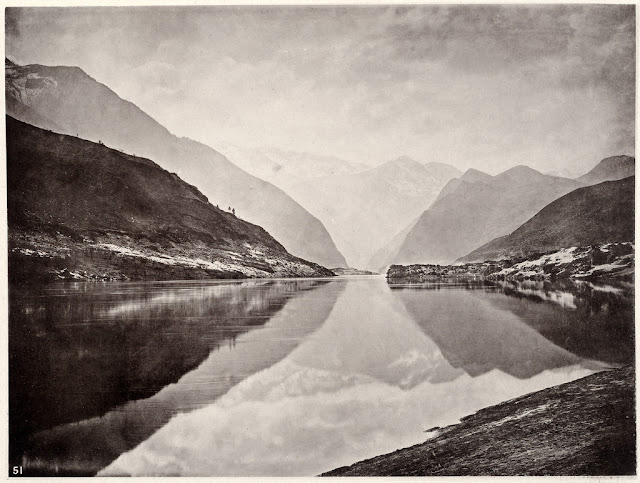John Thomson (1837-1921) was a pioneering Scottish photographer who, after traveling through various parts of Asia, settled in Hong Kong in 1868 and operated a studio there for the next four years. Using Hong Kong as his base, he traveled extensively throughout China and was the first known photographer to document the people and landscapes of China for publication in the western market. Returning to England, he published a four volume book entitled "Illustrations of China and its People" in London, 1873-1874.
Upon returning home, his work among the street people of London cemented his reputation, and is regarded as a classic instance of social documentary which laid the foundations for photojournalism. He went on to become a portrait photographer of High Society in Mayfair, gaining the Royal Warrant in 1881.
In recognition of his work, one of the peaks of Mount Kilimanjaro was named "Point Thomson" on his death in 1921. Some of Thomson's work may be seen at the Royal Geographical Society's headquarters in London.
Pepohoan of Formosa, by John Thomson c.1874 |
Chinese Woman of the Labouring Class, by John Thomson c.1874
|
Chinese Man of the Labouring Class, by John Thomson c.1874 |
Island Temple On The River Min, by John Thomson 1870/1871
|
Lung-hwa-ta, or Pagoda of the Dragon’s Glory, in Shanghai, by John Thomson c.1874
|
Fukien Temple, by John Thomson c.1874 |
The Ming Tombs, Nanking, by John Thomson c.1874
|
Tartar (Manchu) Artillery-men, by John Thomson c.1874 |
Nankow Pass, China, by John Thomson c.1874
Thomson's travels in China were often perilous, as he visited remote, almost unpopulated regions far inland. Most of the people he encountered had never seen a Westerner or camera before. His expeditions were also especially challenging because he had to transport his bulky wooden camera, many large, fragile glass plates, and potentially explosive chemicals. He photographed in a wide variety of conditions and often had to improvise because chemicals were difficult to acquire. His subject matter varied enormously: from humble beggars and street people to Mandarins, Princes and senior government officials; from remote monasteries to Imperial Palaces; from simple rural villages to magnificent landscapes.
The Abbot and Monks of Kushan Monastery, by John Thomson c.1874
|
Workers on the Silent Highway; The Crawlers; Cast Iron Billy, by John Thomson 1876-1877
|

Thomson, King Mongkut of Siam
Then and now - contemporary views of John Thomson's Chinese photographs
Sheying: Shades of China 1850-1900. (Contemporaries of John Thomson)Photography came to China at the start of the 1860s, introduced by foreigners but enthusiastically embraced by natives. In the decades leading up to the twentieth century, every incarnation of the new technology managed to replicate itself in the Chinese popular consciousness: formal landscapes, official portraiture, personal documentation, and architectural and street scenes. These extraordinarily rare images are the meat of Sheying: Shades of China 1850-1900.
The black-and-white photos, a mixture of work by transplanted Europeans and fledgling Chinese photographers, have the painterly shades and delicate composition of Europe’s ongoing pictorialism movement. But the pictures are unmistakably Chinese in subject matter. In a cramped Cantonese street, stall banners blot out the sky. Two prisoners pose stoically in cangues. There are countless images of harbors, filled with the bobbing handmade boats that powered the national economy. For all the influence the relatively established European photographers held, China proved itself to be an inimitable sitter. The collection provides a fascinating look at an empire before industrialization.































































